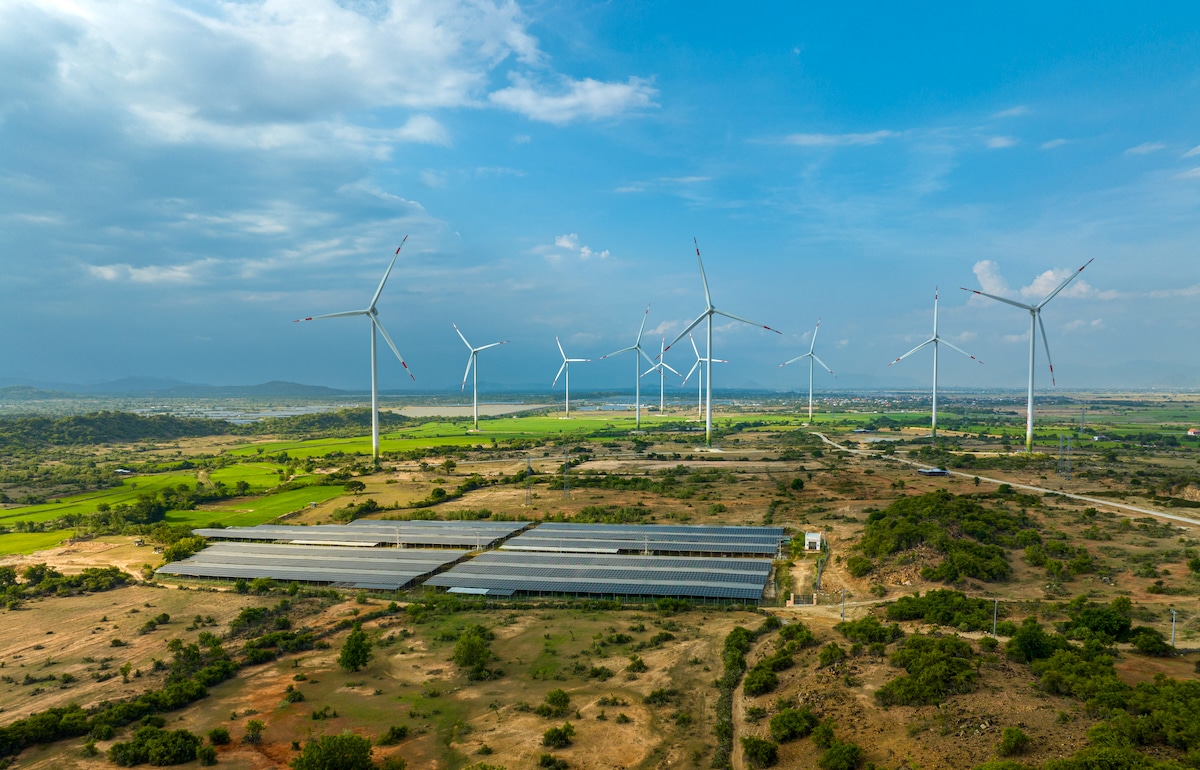Ecowatch
Wind and Solar Capacity in Southeast Asia Rose by 20% in 2023

Wind turbines and a solar farm in a rice paddy field in Ninh Phuoc district in central Vietnam. Pham Hung / iStock / Getty Images Plus
 Why you can trust us
Why you can trust us
Founded in 2005 as an Ohio-based environmental newspaper, EcoWatch is a digital platform dedicated to publishing quality, science-based content on environmental issues, causes, and solutions.
Utility-scale wind and solar capacity rose by 20 percent in Southeast Asia last year, as the region comprising the Association of Southeast Asian Nations (ASEAN) brought its total capacity to more than 28 gigawatts (GW), according to a new Global Energy Monitor (GEM) report.
The increase means the region is in a good position to comfortably meet its renewables goals ahead of schedule, a press release from GEM said.
“The growth of renewables across the region is impressive, but so much more can be achieved,” said GEM researcher Janna Smith in the press release.
The report found that a difficult regulatory environment for renewable energy, lack of progress with starting new renewables projects and perpetuating reliance on fossil fuels were presenting challenges to the clean energy transition.
The figures were taken from Wind Power and Global Solar Tracker data.
Vietnam topped the region’s operating utility-scale wind and solar capacity with 19 GW, while the Philippines and Thailand each had 3 GW. Prospective wind and solar in Vietnam and the Philippeans was at 86 and 90 GW, respectively — 80 percent of the total for the region.
The ASEAN region has nearly five times the proposed offshore wind power — 124 GW — than it does onshore wind. That is almost two times the current 69 GW global operating capacity for offshore wind.
However, just a small portion of construction on prospective projects has started — 6 GW, or three percent — a quarter of the average worldwide.
The goal of ASEAN nations is to have 35 percent renewables capacity installed by 2025, so they need just 10.7 GW in addition to projects currently under construction to meet their target. The region has 23 GW in place to start up by next year, so it is in a good position to exceed its goal.
Southeast Asia has some of the fastest growing economies in the world, and is relying on renewables to ensure its energy security, reported CNBC last year.
“Overall, the region’s policies and trends show countries are eager to transition to clean energy,” said Zulfikar Yurnaidi, energy modeling and policy planning manager at the ASEAN Center for Energy, as CNBC reported.
The region’s energy demand has grown by three percent on average annually in the last 20 years, a pattern that will hold until the end of the decade, the International Energy Agency said.
“With the world now aiming to triple renewables capacity by 2030, governments need to make it easier to bring wind and solar power online. Switching to renewables now from coal and gas will save countries time and money on the path to a clean energy future,” Smith said in the press release.
Subscribe to get exclusive updates in our daily newsletter!
By signing up, you agree to the Terms of Use and Privacy Policy & to receive electronic communications from EcoWatch Media Group, which may include marketing promotions, advertisements and sponsored content.
Source
Disclaimer: No copyright infringement intended. All rights and credits reserved to respective owner(s).












